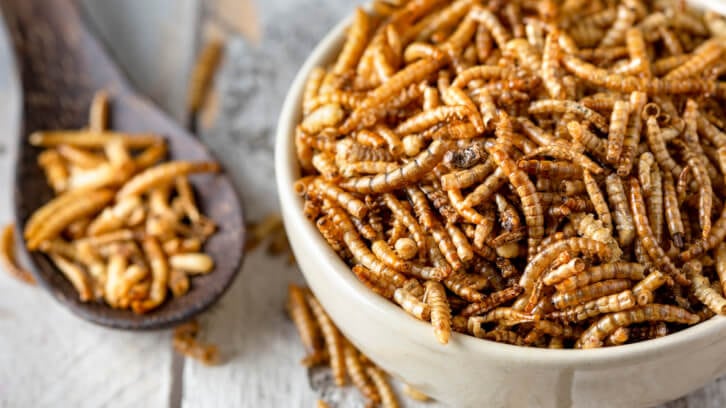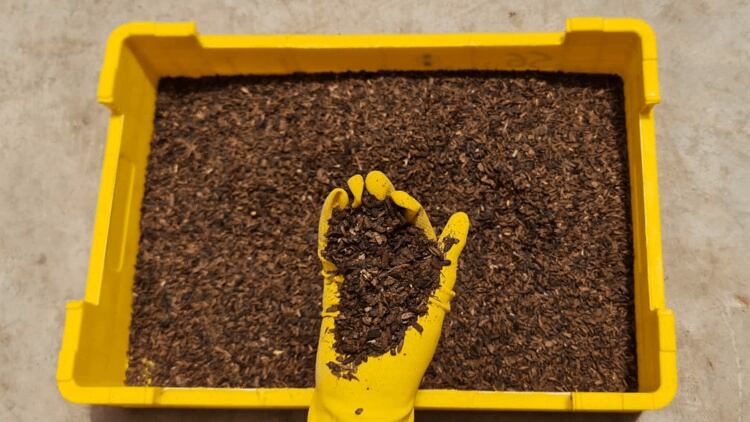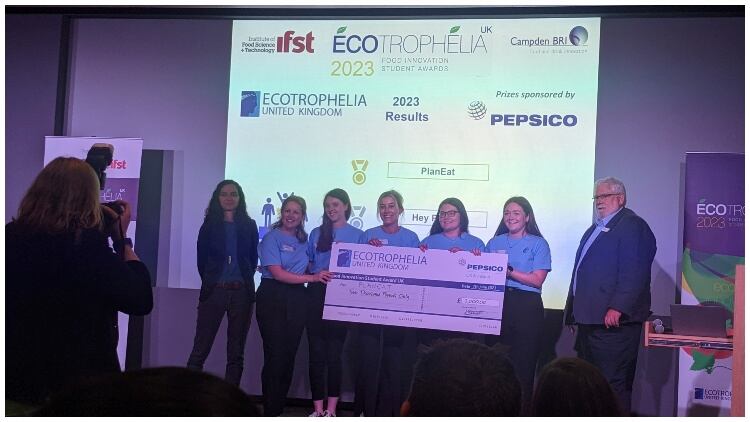Many years ago, I gave a presentation at an animal nutrition conference on the future feeding of organic farm animals. I talked about farmed insects as a high-quality organic protein source to replace soya bean meal and synthetic amino acids. I was laughed at. I remember it well, heckles of “unrealistic”, “fanciful”, and “a stupid idea” still ring in my ears. At the time I was young, passionate about my job and creative, but this reaction really took the wind out of my sails. I still remember it vividly. Fast forward 20 years, and this “fanciful” concept is a reality and I find myself now looking at this from a completely different perspective, validating what is being used and ensuring it is safe.
Entomophagy in the UK
The use of insects as novel food ingredients is certainly gaining popularity in both the human and animal nutrition sectors. In 2017 the European Union approved the use of insect protein in aquaculture feed, this approval extended to the UK.
The use of insects is permitted in pet food, providing they do not carry any diseases that can be passed on to humans or animals. Use in other animal feed is more complex as insects may be classified as animal by-products or processed animal proteins which are subject to specific regulations.
From a human perspective, all insects are considered novel foods except for a few species consumed before 1997. Insects have been allowed, under certain circumstances, to remain on sale while their novel food authorisation application is assessed.
Food safety issues to consider
Insects use, while lower carbon than other proteins, do have hazards associated with them -including microbiological hazards, the potential accumulation of toxic compounds such as heavy metals, potential allergic reactions in consumers and species authenticity challenges.
Microbiological risk can largely be controlled by heat treatment; however, this does not control histamine. In some bacterial contamination, any histidine in the insects can be converted into histamine.
Histamine is heat resistant; therefore, this risk must be managed. Risks associated with this can be minimised by correct storage conditions of the insects. Insects have also been proposed as carriers of antimicrobial resistance, therefore this should be considered in risk assessments.
Toxicological hazards could include PCBs, dioxins, pesticides and heavy metals. Insects will bioaccumulate these if exposed to them, so once again the control of the production system is paramount. Insects do show a high tolerance to mycotoxins, this is, therefore, a lower risk. The control of the substrate is critical to manage these toxicological risks.
Allergenicity is an interesting and perhaps unexpected risk. There seems to be cross-reactivity between crustaceans and edible insects. In addition, when insects eat wheat-based feed there may be gluten present in the insect. So while insects are not currently considered an allergen, precautionary labelling should be considered.
Authenticity is a broader topic. This may cover species substitution (with other insect species that may not be approved) or blending with other processed animal proteins that are not permitted for human or animal consumption. Species can be identified using next generation sequencing (NGS) which is particularly helpful if the insects have been processed into a powder form where species identification is no longer possible.
It seems inevitable that we will continue to see an increase in the use of insects in food and feed. Understanding the risks and mitigating them through management and strategic testing will be critical in growing consumer confidence and acceptability.
As a side note, if anyone laughs at your “fanciful” ideas, don’t feel deflated. It may have taken me 20-odd years, but at least I can say with confidence, “I told you so!”.
In related news, the Good Food Institute Europe has called on the UK Government to invest in plant-based and cultured meat to reduce emissions and bolster food security.




